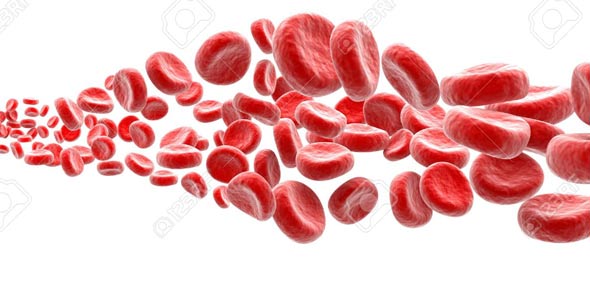RBC Anomalies

.
- 1.
Variation in red blood cells size.
- A.
Anisochromia
- B.
Anisocytosis
- C.
Amisochromasia
Correct Answer
B. Anisocytosis -
- 2.
RBC increases in size.
- A.
Microcyte
- B.
Macrocyte
- C.
Anisocyte
Correct Answer
B. Macrocyte -
- 3.
Associated with Diphyllibothrium latum infection.
- A.
Macrocytosis
- B.
Microcytosis
- C.
Option 3
- D.
Option 4
Correct Answer
A. Macrocytosis -
- 4.
Associated with hookworm infection and Iron deficiency anemia,
- A.
Macrocytosis
- B.
Microcytosis
- C.
Option 3
- D.
Option 4
Correct Answer
B. Microcytosis -
- 5.
Microcytic red blood cells with wide central palor
- A.
Macrocyte
- B.
Microcyte
- C.
Kolionychia
- D.
Ghost cells
Correct Answer
D. Ghost cells -
- 6.
Characterized as spoon shaped nails.
- A.
Kolionychia
- B.
Ghost cells
- C.
Macrocytes
- D.
Microcytes
Correct Answer
A. Kolionychia -
- 7.
Variation in cell shape.
- A.
Anisochromia
- B.
Anisocytosis
- C.
Poikilocytosis
- D.
Anisochromasia
Correct Answer
C. Poikilocytosis -
- 8.
Normal MCV of erythrocytes.
- A.
>100 fl
- B.
82-92 fl
- C.
- D.
5 fl
Correct Answer
B. 82-92 fl -
- 9.
Associated with defective hemoglobin formation.
- A.
Macrocytes
- B.
Microcytes
- C.
Anisocytes
Correct Answer
B. Microcytes -
- 10.
Normal size of erythrocytes.
- A.
- B.
>8um
- C.
15um
- D.
1um
Correct Answer
A. -
- 11.
Conditions associated in Microcytes:
- A.
Thalassemia
- B.
Iron Deficiency Anemia
- C.
Rh null syndrome
- D.
Severe Liver disease
- E.
Myelofibrosis
- F.
Anemia of chronic disease
- G.
Lead poisoning
- H.
Uremia
- I.
Sideroblastic Anemia
Correct Answer(s)
A. Thalassemia
B. Iron Deficiency Anemia
F. Anemia of chronic disease
G. Lead poisoning
I. Sideroblastic Anemia -
- 12.
Burr cells are seen in
- A.
Thalassemia
- B.
Liver Disease
- C.
Cancer of stomach
- D.
Myeloid metaplasia
- E.
Uremia
- F.
Pyruvate Kinase deficiency
- G.
Acute blood loss
Correct Answer(s)
C. Cancer of stomach
E. Uremia
F. Pyruvate Kinase deficiency
G. Acute blood loss -
- 13.
Stomatocytes are seen in:
- A.
Bile acid abnormalities
- B.
Alcoholism
- C.
Severe burns
- D.
Diffused intravascular coagulation
- E.
Microanglopathic hemolytic anemia
- F.
Lead poisoning
- G.
Rh null syndrome
- H.
Thalassemia
- I.
Severe liver disease
- J.
Hereditary Stomatocytosis
Correct Answer(s)
B. Alcoholism
G. Rh null syndrome
I. Severe liver disease
J. Hereditary Stomatocytosis -
- 14.
Dacryocytes are seen in:
- A.
Thalassemia
- B.
Uremia
- C.
Sever Burns
- D.
Myeloid metaplasia
- E.
Cancer of the stomach
- F.
Myelofibrosis
- G.
Iron deficiency anemia
- H.
Microanglopathic hemolytic anemia
Correct Answer(s)
D. Myeloid metaplasia
F. Myelofibrosis -
- 15.
Schistocytes are seen in:
- A.
Uremia
- B.
Thalassemia
- C.
IDA
- D.
Severe burns
- E.
Diffused intravascular coagulation
- F.
Myeloid metaplasia
- G.
Alcoholism
- H.
Rh null syndrome
- I.
Microanglopathic hemolytic anemia
Correct Answer(s)
A. Uremia
D. Severe burns
E. Diffused intravascular coagulation
I. Microanglopathic hemolytic anemia -
- 16.
Mouth cells
Correct Answer(s)
Stomatocytes
stomatocytes - 17.
Teardrop or tennic racket shaped cells
Correct Answer(s)
Dacryocytes
dacryocyte - 18.
Elliptocytes or cigar cells
Correct Answer(s)
Ovalocytes
ovalocytes - 19.
Thorn spurr cells
Correct Answer(s)
Acanthocytes
acanthocytes - 20.
Regularly spiculated surface
Correct Answer(s)
Echinocytes
echinocytes
burr cells
Burr Cells
Burr cells - 21.
Irregularly spiculated surface
Correct Answer(s)
Acanthocytes
acanthocytes - 22.
Cresent shaped cells
Correct Answer(s)
Depranocytes
depranocytes
Sickle cells
Sickle Cells - 23.
Rbcs will bull's eye appearance, Mexican hot cells.
Correct Answer(s)
Leptocytes
Platycytes
Codocytes - 24.
Stained deep blue with wright's stain.
- A.
Howell-jolly bodies
- B.
Basophilic stipplings
- C.
Siderotic granules
- D.
Codot rings
Correct Answer
B. Basophilic stipplings -
- 25.
Stained with perl's prussian blue.
- A.
Heinz Bodies
- B.
Siderotic granules
- C.
Howell-Jolly Bodies
- D.
Codot Rings
Correct Answer
B. Siderotic granules -
- 26.
Stained red or reddish purple with wright's stain
- A.
Howell-Jolly Bodies
- B.
Heinz Bodies
- C.
Basophilic granules
- D.
Codot rings
Correct Answer
D. Codot rings -
- 27.
Found in aggregation of denaturated hemoglobin, GGPD deficiency and hereditary hemolytic anemia.
- A.
Codot rings
- B.
Heinz Bodies
- C.
Howell Jolly Bodies
- D.
Basophilic Stipplings
Correct Answer
A. Codot rings -
Quiz Review Timeline +
Our quizzes are rigorously reviewed, monitored and continuously updated by our expert board to maintain accuracy, relevance, and timeliness.
-
Current Version
-
Mar 21, 2022Quiz Edited by
ProProfs Editorial Team -
Mar 22, 2015Quiz Created by
Jmfrncsc
 Back to top
Back to top


